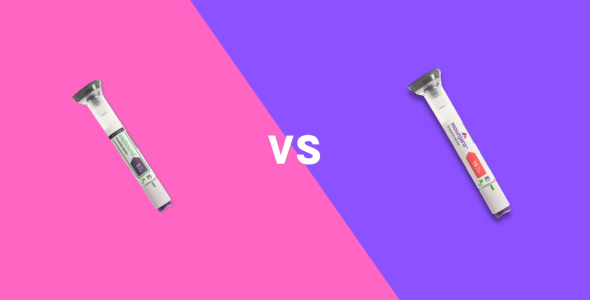What is the best time of day to take Mounjaro?
Key highlights
- Mounjaro (tirzepatide) is a subcutaneous injection administered in your abdomen, thigh, or upper arm on the same day every week. It can be taken with or without food.
- You can inject Mounjaro at any time of the day that most suits you and when you’re most likely to remember.
- Some people prefer taking Mounjaro at night to sleep through side effects like nausea or stomach pain, while others prefer taking it in the morning to help remember to take it.
- Although you don’t need to take Mounjaro around the same time as eating, some people find that eating bland foods around the same time as taking Mounjaro can help with nausea.
- It can be helpful to add a calendar notification to help you remember when to take Mounjaro every week and to choose a time that you’ll be most likely to remember.
Mounjaro (tirzepatide) is an FDA-approved medication to improve blood sugar levels in adults with Type 2 diabetes. It’s also prescribed off-label for weight management combined with diet and exercise.
Mounjaro single-dose pens are pre-filled disposable injections administered under the skin of the stomach, upper arm, or thigh on the same day every week, at any time that is most convenient for you. There are no reports that taking Mounjaro at any particular time of the day has any effect on blood sugar levels or weight loss.
Mounjaro works best when taken on the same day each week. Consistency helps get the best results and reduces the risk of side effects. The best time of day to take Mounjaro is when it’s most convenient for you, at a time that you are alert and most likely to remember.
Learn more about the best time to inject Mounjaro and tips for establishing a weekly schedule that works best for you.
What is Mounjaro?
Mounjaro (tirzepatide) is an FDA-approved prescription injectable medication to improve blood sugar levels in adults with Type 2 diabetes. It’s also prescribed off-label for weight loss in people with obesity or overweight when combined with a diabetes-friendly diet and exercise.
Mounjaro works by activating two gut hormones: glucagon-like peptide-1 GLP-1 and glucose-dependent insulinotropic polypeptide GIP receptor in the brain and the pancreas. This helps regulate insulin after meals, controls blood sugar, slows stomach emptying, and reduces appetite, which leads to eating less and consequently losing weight.
This dual action may make Mounjaro more effective for weight management and blood glucose control than other GLP-1 medications that target only one receptor, like brand names Ozempic and Wegovy.
Zepbound, a medication with the same active ingredient as Mounjaro, was approved by the FDA for weight management in 2023.
The starting dosage of Mounjaro for blood sugar management is typically 2.5 mg once weekly for 4 weeks, 5 mg once weekly for 4 weeks, and possibly increased to a maintenance dose of 7.5mg once weekly, 10 mg once weekly, 12.5 mg once weekly, or up to a maximum of 15 mg once weekly.
Consistent use of Mounjaro can help both blood sugar regulation and promote weight loss, making it a useful tool for people with type 2 diabetes or those trying to lose weight.
When should I inject Mounjaro?
The manufacturer Eli Lilly mentions that you should take a Mounjaro injection once every week, on the same day of the week, but offers flexibility in selecting your dosing schedule. You can choose any day and time according to your convenience and preference.
Choose a time when you’re likely to remember and can take the medication correctly without distractions. You can take Mounjaro at any time of the day, as long as it’s the same day each week.
The medication doesn’t necessarily have to be taken with food. It works the same whether you eat or not. However, many people find it helpful to take their medication during a meal to remember.
If you have trouble remembering your injection day, try marking it on a calendar or setting a reminder on your phone.
Factors that influence timing
Choose a time that fits into your daily life on the same day each week. If needed, you can inject it a day early, but make sure there are at least 3 days (72 hours) between doses.
You can take Mounjaro with or without food. If you experience nausea, taking it after a meal may help, or taking it before bed might reduce digestive discomfort.
In clinical trials, people didn’t report sleep-related side effects from Mounjaro, so it doesn’t matter if you inject it in the morning or at night.
You can change the day you inject Mounjaro, but make sure it’s been at least 3 days since your last dose. For example, if you usually inject on Monday, you can switch to Thursday or another day later in the week.
What should I do if I miss a dose of Mounjaro?
If you happen to miss a dose of Mounjaro pen, take it as soon as you remember as long as it is within 4 days of the skipped dose.
In case you realize the missed dose after four days, skip it, and wait until your next regularly scheduled day instead and resume with your regular once-weekly dosing schedule.
Don’t take two doses too close together (within 72 hours), as this can increase the possibility of side effects.
What is the best place to inject Mounjaro?
Mounjaro works the same no matter where you inject it.
You can inject Mounjaro under the skin into your upper thigh, back side of your upper arm, or abdomen (stomach). If you want to inject it into the back of your upper arm, you’ll need help from someone else. Be sure to change the injection site each week to avoid injection site reactions with symptoms like swelling, itching, pain, or redness around the injection area.
You can find more information about how to inject Mounjaro and watch an instructional video on the drugmaker’s website.
Tips for maximizing results with Mounjaro
Mounjaro helps manage diabetes and weight loss, but it works best when combined with healthy lifestyle changes. Here are a few tips to maximize results with your Mounjaro treatment:
Healthy diet
Mounjaro helps reduce your appetite and decreases the amount you need to eat to feel full. Healthcare professionals often recommend a healthy, low-calorie diet while using Mounjaro, with a focus on lean protein and fiber, and avoiding high-fat, sugary, and processed foods.
The Mediterranean diet is often recommended for diabetes and weight loss. It includes lean proteins, whole grains, healthy fats, and lots of fruits and vegetables. This balanced way of eating helps control blood sugar levels and provides protein, fiber, vitamins, and minerals needed for muscle health while losing weight.
Vitamins and supplements
While Mounjaro’s appetite-reducing effect can be helpful, it’s important to avoid not eating enough, as it can lead to malnutrition and vitamin deficiencies.
Vitamin D aids weight loss and insulin sensitivity, while B12 supplements may support weight loss in those with low levels.
Supplements like Chromium, Omega-3 fatty acids, and Coenzyme Q10 can improve insulin resistance and help with weight loss.
Talk to your healthcare professional for medical advice to find out which supplements or natural products might be the best option for you.
Hydration
The most common side effects of Mounjaro are gastrointestinal, like nausea or diarrhea. If this occurs, it’s important to stay hydrated, just like you would if you had a stomach bug.
Aim to drink at least eight glasses of water a day, but you may need more depending on your weight and activity level. Eating foods like cucumbers, zucchini, and watermelon, can also be helpful.
Physical activity
Adding exercise to your routine can make Mounjaro work even better for managing diabetes and helping with weight loss. Regular exercise improves insulin sensitivity, which helps control blood sugar, and also burns calories for weight loss.
Try to get at least 150 minutes of moderate exercise each week, like walking, swimming, or cycling. Strength training two to three times a week can also help build muscle and support weight management.
Mounjaro side effects
A 2023 study found that side effects from tirzepatide (the active ingredient in Mounjaro) may happen in the first 2 weeks after the first dose. These side effects are usually mild to moderate, but they usually go away as your body adjusts.
The most possible side effects of Mounjaro may include nausea, diarrhea, vomiting, decreased appetite, constipation, upset stomach, and abdominal pain.
You’re more likely to have side effects when you first start Mounjaro or after increasing your dose, especially with higher doses (10 mg weekly or more).
Besides these common side effects, some people also experience serious side effects, including:
- Low blood sugar (hypoglycemia)
- Changes in vision (diabetic retinopathy)
- Severe allergic reactions
- Kidney problems (kidney failure)
- Inflammation of your pancreas (pancreatitis)
- Gallbladder problems
- Thyroid tumors
Mounjaro and alcohol
Although you can drink alcohol while taking Mounjaro, it’s not the best combination. According to the American Diabetes Association, drinking alcohol while using Mounjaro can increase the risk of low blood sugar (hypoglycemia), especially if you take other diabetes medications.
Alcohol is also high in calories, which may slow weight loss or even lead to weight gain. It’s best to avoid alcohol when using GLP-1 receptor agonists like Mounjaro (tirzepatide), Ozempic (semaglutide) or Trulicity (dulaglutide).
Talk to your healthcare provider about how much alcohol is safe to drink while on Mounjaro and when to take your next dose if you plan to drink.
Frequently asked questions
Does it matter if you take Mounjaro in the morning or evening?
It doesn’t matter if you take Mounjaro in the morning or evening. The most important thing is to take it on the same day each week. Take it at a time that you are alert and most likely to remember
Can Mounjaro be taken with food?
Yes, Mounjaro can be taken with or without food. Food does not affect how the medication works.
Are there interactions with other medications or supplements?
Mounjaro may cause drug interactions with other medications or supplements, so it’s important to talk to your healthcare provider before starting any new medications. They can help ensure it’s safe and provide advice on how to take them together.
Bottom line
Mounjaro is a prescription drug for controlling blood sugar levels in people with diabetes and is also commonly used off-label for weight loss.
The best time to inject Mounjaro is when it’s easiest for you to remember. It should be taken on the same day each week, at a time that fits your schedule when you aren’t distracted, with or without food.
You can change your injection day, but make sure it’s been at least 3 days since your last dose.
Nausea, vomiting, and stomach pain are common side effects, but they usually go away as your body gets used to the medication.
If you have any questions about side effects, lifestyle, or how Mounjaro fits into your routine, talk to your healthcare provider.










